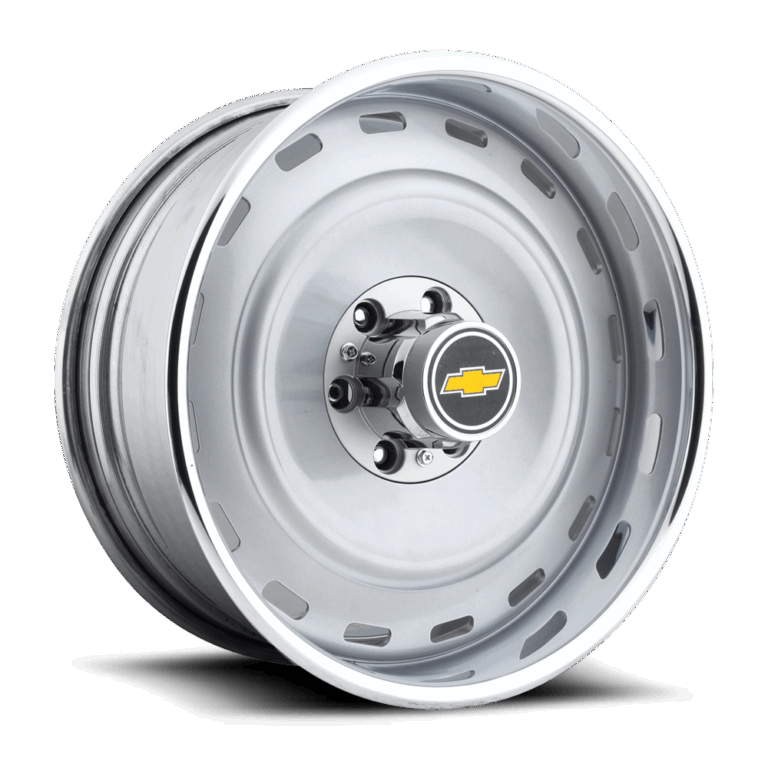Self-Driving Semi Trucks For Sale: Navigating the Future of Logistics
Self-Driving Semi Trucks For Sale: Navigating the Future of Logistics cars.truckstrend.com
The rumble of diesel engines and the vast stretches of highway have long been synonymous with the backbone of global commerce. Yet, a revolutionary shift is underway, promising to redefine the very essence of freight transportation: the advent of self-driving semi trucks. While the image of a fully driverless 18-wheeler cruising silently down the interstate might still belong to the realm of science fiction for many, the reality is that advanced autonomous capabilities are already here, and the concept of "Self-Driving Semi Trucks For Sale" is rapidly moving from futuristic dream to imminent commercial availability.
This comprehensive guide aims to demystify the landscape of self-driving semi trucks, exploring what’s currently available, what’s on the horizon, the immense benefits they offer, crucial considerations for potential buyers, and how to navigate this transformative new market. Whether you’re a fleet owner, an independent operator, or simply curious about the future of logistics, understanding the nuances of these groundbreaking vehicles is paramount.
Self-Driving Semi Trucks For Sale: Navigating the Future of Logistics
Understanding the Landscape: What’s "For Sale" Now?
It’s crucial to distinguish between the various levels of autonomous technology. When we talk about "Self-Driving Semi Trucks For Sale" today, we’re largely referring to vehicles equipped with advanced driver-assistance systems (ADAS) rather than fully Level 5 (L5) autonomous trucks operating without any human intervention in all conditions.
Current Offerings (ADAS-Equipped Trucks):
Many leading truck manufacturers, including Daimler Trucks (Freightliner), Volvo Trucks, PACCAR (Kenworth, Peterbilt), and Navistar (International), already offer trucks with sophisticated ADAS features. These include:
- Adaptive Cruise Control (ACC): Automatically adjusts speed to maintain a safe following distance.
- Lane Keeping Assist (LKA): Helps the truck stay centered in its lane, often with haptic feedback or steering intervention.
- Automatic Emergency Braking (AEB): Detects potential collisions and applies brakes if the driver doesn’t react.
- Blind Spot Detection (BSD): Warns drivers of vehicles in their blind spots.
- Traffic Jam Assist: Combines ACC and LKA for hands-on driving in congested traffic (often Level 2).

These systems enhance safety and reduce driver fatigue but still require a human driver to be fully engaged and ready to take control. They are readily "for sale" and are increasingly becoming standard features on new heavy-duty trucks.
The Near Future (Level 4 Autonomous Trucks):
The true "self-driving" revolution is unfolding with Level 4 (L4) autonomous trucks. These vehicles can operate autonomously within a defined Operational Design Domain (ODD) – for example, specific highway routes, certain weather conditions, or particular times of day – without human intervention. A safety driver or remote operator might still be present or available for contingencies, but the truck handles most driving tasks.
L4 trucks are not yet widely "for sale" to the general public in the traditional sense. Instead, they are being deployed through:
- Pilot Programs & Partnerships: Autonomous technology companies (e.g., Waymo Via, Aurora, TuSimple, Plus.AI, Embark) are partnering with major truck manufacturers and large logistics companies to test, refine, and gradually integrate these technologies into commercial operations.
- Pre-Order & Lease Agreements: Forward-thinking fleet owners can engage in early access programs or sign agreements for future deployment, often involving a per-mile service fee model rather than outright purchase.

This phase represents the cusp of true commercial availability, with many industry experts predicting broader deployment of L4 trucks on specific routes within the next 2-5 years.
Benefits of Investing in Advanced Semi Trucks
The allure of self-driving semi trucks goes far beyond technological novelty. They promise to deliver substantial, tangible benefits across the entire logistics value chain:
- Operational Efficiency: Autonomous trucks can potentially operate 24/7, limited only by maintenance schedules and refueling. This maximizes asset utilization, reduces transit times, and enables "just-in-time" delivery with greater precision. Features like platooning (trucks driving in close convoy) can also significantly reduce fuel consumption by minimizing aerodynamic drag.
- Enhanced Safety: Human error is a major contributor to truck accidents. Autonomous systems, with their array of sensors, AI processing, and faster reaction times, can significantly reduce the incidence of collisions, leading to fewer fatalities, injuries, and property damage.
- Addressing the Driver Shortage: The trucking industry faces a persistent and growing shortage of qualified drivers. Autonomous trucks offer a long-term solution, allowing human drivers to focus on more complex, local, or last-mile deliveries, or transitioning into new roles like remote operators or fleet managers.
- Cost Savings: While the initial investment may be higher, long-term savings are projected through reduced fuel consumption, lower insurance premiums (as accident rates decrease), optimized routing, and potentially lower labor costs. Predictive maintenance enabled by advanced sensors can also reduce downtime.
- Environmental Impact: Optimized driving patterns, platooning, and the potential for autonomous electric trucks can lead to a significant reduction in greenhouse gas emissions and improved fuel efficiency, contributing to a greener supply chain.
Key Technologies and Features to Look For
Understanding the core technologies powering self-driving semi trucks is vital for evaluating their capabilities:
- Sensor Suite:
- Lidar (Light Detection and Ranging): Creates highly detailed 3D maps of the environment using laser pulses.
- Radar: Detects objects and their velocity, effective in adverse weather conditions.
- Cameras: Provide visual data, interpret traffic signs, lane markings, and detect objects.
- Ultrasonic Sensors: Used for short-range object detection, especially in low-speed maneuvers.
- High-Definition (HD) Maps: Extremely precise, pre-mapped digital representations of roads, including lane markings, curbs, traffic signals, and road signs, crucial for localization and path planning.
- Global Positioning System (GPS) & Inertial Measurement Units (IMUs): For precise positioning and motion tracking.
- Artificial Intelligence (AI) and Machine Learning (ML): The "brain" of the system, processing sensor data, predicting other road users’ behavior, and making real-time driving decisions.
- Vehicle-to-Vehicle (V2V) & Vehicle-to-Infrastructure (V2I) Communication: Enables trucks to communicate with each other (e.g., for platooning) and with road infrastructure (e.g., traffic light timing, road conditions).
- Redundancy Systems: Critical for safety, ensuring that if one system fails (e.g., a sensor or a braking component), a backup system immediately takes over.
- Teleoperation/Remote Assistance: Human operators can remotely monitor fleets and provide assistance or guidance when autonomous systems encounter challenging, unforeseen situations.
Important Considerations Before Purchase (or Pre-Order)
Acquiring a self-driving semi truck is a significant strategic decision, necessitating careful consideration of several factors:
- Regulatory Landscape: Autonomous vehicle regulations are evolving rapidly and vary significantly by state and country. Understanding where and how these trucks can legally operate is paramount.
- Infrastructure Readiness: While L4 trucks primarily operate on highways, the broader ecosystem (charging infrastructure for electric models, smart road sensors, dedicated autonomous lanes) will impact widespread adoption.
- Integration with Existing Fleets: How will autonomous trucks integrate with your current fleet management systems, dispatch processes, and maintenance routines? Data compatibility and seamless workflow are key.
- Maintenance and Support: Autonomous trucks require specialized maintenance skills, often involving software updates, sensor calibration, and diagnostic tools beyond traditional mechanics. Ensure robust support agreements are in place with the manufacturer or tech provider.
- Insurance and Liability: The legal and insurance frameworks for autonomous vehicle accidents are still developing. Understanding liability in the event of a collision is critical.
- Cybersecurity Risks: As connected vehicles, self-driving trucks are vulnerable to cyber threats. Robust cybersecurity measures are essential to protect against hacking and data breaches.
- Operational Design Domain (ODD): Clearly understand the limitations of the autonomous system. Can it operate in heavy rain, snow, fog? Is it restricted to certain speeds or routes?
The Purchase Process: How to Acquire a Self-Driving Semi
Unlike buying a conventional truck off a dealership lot, acquiring an L4 self-driving semi truck involves a more strategic approach:
- Define Your Needs and Routes: Identify which of your current routes are suitable for autonomous operation (e.g., long-haul, highway-only segments). What level of autonomy truly addresses your operational pain points?
- Research Manufacturers and Technology Providers: Investigate which truck OEMs are partnering with which autonomous driving tech companies. Look at their track records, safety reports, and deployment strategies.
- Engage in Pilot Programs: Many autonomous tech companies and OEMs offer pilot programs for early adopters. This allows you to test the technology in your specific operational environment, understand its capabilities, and provide valuable feedback before full commitment.
- Explore Partnership Models: Instead of outright purchase, many initial deployments will involve service agreements, where you pay a per-mile fee for the autonomous driving capability, potentially including maintenance and support.
- Plan for Integration and Training: Prepare your existing team for new roles. Dispatchers might need new tools, and some drivers might transition to roles as remote operators, fleet supervisors, or last-mile delivery specialists.
- Assess ROI and Financing: Work closely with potential providers to project the return on investment, considering fuel savings, labor cost reductions, increased utilization, and potential premium service offerings. Explore financing options tailored to these advanced assets.
Challenges and Future Outlook
Despite the immense promise, the path to widespread autonomous trucking is not without challenges:
- Public Acceptance and Trust: Building public confidence in driverless technology, especially after high-profile incidents, is an ongoing effort.
- Job Displacement Concerns: The impact on truck driving jobs requires careful management and retraining programs.
- Cost of Entry: The initial investment for autonomous systems remains high, though costs are expected to decrease with scale.
- Technological Hurdles: Navigating unpredictable human behavior, extreme weather conditions, and complex urban environments still presents significant engineering challenges for L5 autonomy.
However, the future is undeniably autonomous. We will likely see the continued expansion of hub-to-hub autonomous corridors, where trucks handle long stretches of highway autonomously, with human drivers or smaller autonomous vehicles completing the "first and last mile." The convergence of electric propulsion with autonomous driving will further revolutionize the industry, creating a more efficient, safer, and sustainable logistics network.
Practical Advice and Actionable Insights
For fleet owners and logistics companies looking to embrace this future:
- Start Small, Learn Big: Begin by integrating trucks with advanced ADAS features to familiarize your operations with partial automation.
- Stay Informed and Engaged: Keep abreast of regulatory changes, technological breakthroughs, and industry partnerships. Attend conferences and join industry forums.
- Cultivate Partnerships: Collaborate with autonomous technology developers and truck manufacturers. These relationships are key to early access and tailored solutions.
- Invest in Workforce Transition: Prepare your human workforce for evolving roles. Retrain drivers for new opportunities within the autonomous ecosystem.
- Prioritize Data and Connectivity: Embrace telematics and data analytics to optimize operations and prepare for the data-rich environment of autonomous fleets.
- Pilot Before You Plunge: Leverage pilot programs to rigorously test autonomous solutions in your specific operational context before making large-scale commitments.
Concluding Summary
The concept of "Self-Driving Semi Trucks For Sale" is rapidly transitioning from a distant vision to a tangible reality. While fully driverless Level 5 trucks are still some years away from mass market sale, advanced Level 2 and 3 ADAS-equipped trucks are readily available, and Level 4 autonomous trucks are entering commercial deployment through partnerships and pilot programs. The benefits—ranging from unparalleled efficiency and enhanced safety to addressing critical labor shortages—are compelling.
Navigating this nascent market requires a strategic approach, focusing on understanding the technology, assessing regulatory landscapes, and fostering key partnerships. The trucking industry is on the cusp of a profound transformation, and for those ready to embrace it, the self-driving semi truck represents not just a vehicle, but a powerful engine for the future of global logistics.
Table: Estimated Pricing & Availability for Self-Driving Semi Trucks (Speculative)
| Autonomy Level | Description | Estimated Price Range (USD) | Key Features
Self-Driving Semi Trucks for Sale
The concept of self-driving semi trucks is poised to revolutionize the logistics and transportation industry. These technologically advanced vehicles promise a future where goods are moved more efficiently, safely, and economically. While fully autonomous Level 5 (L5) self-driving semi trucks are still undergoing rigorous testing and regulatory evaluation, advanced driver-assistance systems (ADAS) are already prevalent, and Level 4 (L4) autonomous trucks are on the verge of commercial deployment. This comprehensive guide will delve into what "Self-Driving Semi Trucks For Sale" truly means in today’s market, exploring current availability, future prospects, benefits, challenges, and practical advice for interested parties.
1. Understanding the Current Landscape: What’s "For Sale" Today?
When considering "Self-Driving Semi Trucks For Sale," it’s crucial to understand the distinction between different levels of autonomous technology as defined by the Society of Automotive Engineers (SAE):
- Level 0 (No Automation): The driver performs all driving tasks.
- Level 1 (Driver Assistance): The vehicle has a single automated system (e.g., Adaptive Cruise Control).
- Level 2 (Partial Automation): The vehicle can control both steering and acceleration/deceleration under specific circumstances, but the driver must remain engaged and monitor the environment (e.g., combined Adaptive Cruise Control and Lane Keeping Assist).
- Level 3 (Conditional Automation): The vehicle can perform all driving tasks under specific conditions, but the human driver must be ready to take over when prompted (e.g., "traffic jam pilot").
- Level 4 (High Automation): The vehicle can perform all driving tasks and monitor the driving environment under specific conditions (Operational Design Domain – ODD). In






